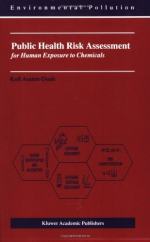|
This section contains 2,693 words (approx. 9 pages at 300 words per page) |

|
by Richard L. Stroup
About the author: Richard L. Stroup is a professor of economics at Montana State University and serves on the board of advisors of the Independent Institute, a conservative think tank based in Oakland, California.
In 1990, Congress passed the Clean Air Act Amendments (CAAA). Title III of the Act required the Environmental Protection Agency (EPA) to regulate emissions of toxic or hazardous pollutants. This controversial Title was the culmination of pressure by environmentalists to impose more stringent controls on airborne emissions of 189 potentially toxic airborne substances in addition to the “criteria” pollutants such as sulfur dioxide, carbon monoxide, and ozone. About 250 major industrial emitters of the newly listed substances, including chemical plants and oil refineries, would have to install “maximum achievable control technology” (MACT).
High Costs, Low Risk
There are two major problems...
|
This section contains 2,693 words (approx. 9 pages at 300 words per page) |

|




